
In the hillwalking world biggest may not always be best, but size does still have an irresistible attraction. Whether it's a Welsh 3000-er, one of 282 Scottish Munros (plus innumerable 'Tops') or Lakeland's mere four, the 3000-footers enjoy an enduring popularity. Perhaps, like me, you think in metric, and disdain hill lists? Even so that nice round 3000-foot figure retains a special something, an appeal that 914.4m somehow lacks. So let's hear it for the biggies, and the old way of measuring them. Which are the best of British? It's a question with as many answers as there are individual hillwalkers, so we asked a few well known hill folk each to tell us about a personal favourite. Here's our combined top 10. What's yours?
Steven Fallon loves Ladhar Bheinn
The Knoydart peninsula is one of the most scenic areas in Scotland, and without road or rail links it feels pretty remote too. Ladhar Bheinn (pron. Larven) is the dominant hill. Most will set aside a weekend for it. Having taken the boat over from Mallaig they'll bag Ladhar Bheinn and its neighbours from a base in Inverie, with its vibrant community spirit and excellent Old Forge Inn. From this side however, the mountain just looks like any other hill, with gentle grassy slopes rising above forestry. If you want to enjoy Ladhar Bheinn's far grander facade, you'll need to approach it instead from Loch Hourn. This requires more effort, planning and possibly an overnight camp. The walk in along Loch Hourn's southern shore is simply stunning - rising and falling, it teases with occasional views of the mountain ahead. Only on the last descent to Barrisdale Bay does the true magnificence of Ladhar Bheinn become apparent. It's a vast mountain with many ridges, corries and peaks. The finest ascent follows a path into hidden Coire Dhorrcaill, then the shoulder of Druim a'Choire Odhair. The summit ridge has three high points, with the middle one being the summit. The remains of a trig point rest on the western top, from where the views are simply stunning - Rum, Skye, Beinn Sgritheall, Kintail, Lochaber and Moidart. I've been on this mountain in all conditions - mist, wind, rain, sunshine and snow - and it has never disappointed.
Steven Fallon enjoys Munros so much that, to date, he has completed a record 15 rounds. This unrivalled knowledge of the big Scottish hills helps in his day job as a mountain leader. See the Steven Fallon Mountain Guides website for guided hillwalks, scrambles and skills courses.
Kate Worthington fawns over Elidir Fawr
Elidir Fawr rises relentlessly above the villages of Nant Peris and Dinorwig, marking a sudden break in the magnificent procession of high ground, the Glyderau, that runs from Capel Curig in the east. The lower slopes of Elidir Fawr have been literally blasted into history by hundreds of years of slate quarrying, and now its inside heart gives way to a hydroelectric pump-storage power station – it's actually quite bonkers! Yet away from the jaws of 'Electric Mountain' there exists a wild and quiet side, that is only surpassed by the black crags (Craig Cwrwgl) that tumble down from its northern aspect, towards the reservoir Marchlyn Mawr. I find this body of water quite eery - inky black sometimes, like a shark's eye.
From every rear window at home, I view this mountain and its changing colours, moods, shadows, sheep, slate and sunshine. I gaze up to its slender rocky ridge and see the summit – clear – when much of the Snowdon range is engulfed in cloud. Its sweeping cwm towards Foel Goch is a runner's delight although you have to bear the grind of the punishing south eastern ascent from the valley floor. As soon as I moved to Nant Peris, I vowed I would run up that mountain…and I did (and it hurt). But you feel on the edge of the world on a good day, with views straight out to sea to the west, and all that space erupting forth. Descending its steep flanks is much better, especially to finish off a march along the Glyderau, where you can enjoy the rocky scrambles towards the summit, from the north east, before literally tripping off the wind shelter down towards the valley. Best of all you can stroll straight into the waiting arms of the Vaynol Arms pub. It's worth the steep and steady descent, especially on a clear evening when the low angled sun picks out the most obscure patterns in the rock architecture of Snowdon and Crib Goch across the valley. Pick a fabulous weather day and go see for yourself…it's not a mountain to swear and fume at. Be clever about your route direction and create a linear walk with heart and soul, electricity and slate, strength and beauty.
Kate Worthington is a Summer and Winter Mountain Leader, and Director of Snowdonia-based mountain activities company RAW Adventures.
Steve Perry finds Ben Hope most auspicious
The most northerly Munro in Scotland, this rugged wedge rises alone above the spacious moors of Sutherland and the cold open sea. This isn't just my favourite mountain, it has been part of my life. After completing two Munro rounds on Ben Hope I then moved house and it became my local Munro. The accolade of UK's most northerly 3000er is not all this mountain is about. In fact it is so much more and has something for just about everyone - the fantastic North Ridge walker's ascent, classic scrambling on Browns' Ridge, atmospheric rock climbing on Petticoat Ridge and excellent winter climbing on Bell's Ridge will all lead you to the summit of this north coast sentinel. Those lucky enough to find it clear will be rewarded royally with vistas stretching past Ben Loyal to The Orkneys, then all around to Foinaven and beyond. Hope stands the proud Viking amongst the Scots. Come and see it sometime. North is the cry!!
In 2005-6 Steve completed the first, and to date only, continuous winter walking round of Scotland's Munros (see this UKH article). He's also walked Land's End to John o'Groats via every 3000-er in Britain.
It's no Munro, but Carn Etchachan is the Cairngorms' finest, says Gary Hodgson
Carn Etchachan (1120m) lies in the very heart of the central Cairngorm plateau. Despite its remoteness and height, it doesn't attain Munro status. So what makes it so special? Well, it boasts one of the finest views in the whole of The Cairngorms. I say "boasts" but in fact on the countless occasions I have visited this hill I have never seen another soul there. From its summit you have a bird's eye view down onto the entire stretch of Loch Avon, and on either side of the Loch Avon basin there lie two of the most striking and well-known climbing crags in the Cairngorm National Park: The Shelter Stone and Hell's Lum. There are no paths leading up to this rocky summit and the absence of any visible roads or any form of human habitation gives a real feeling of wildness. Being only a three-hour walk from the Coire Cas carpark, it is actually easily accessible or alternatively, there also are two superb but straightforward winter climbs via Castlegates Gully and Pinnacle Gully. There are myriad routes to the summit and just by having a look at the map, I'm sure you'll find your own favourite way. In both summer and winter, I have often stood on its tiny summit area been completely absorbed by the surrounding scenery and relished the 'wilderness' feel. What a shame for the thousands of folk who walk up Ben Macdui every year and never take a detour of less than 3km to marvel at this, the finest mountain in The Cairngorms!
Aviemore-based Gary Hodgson has lived in the Scottish Highlands for over 20 years, and runs his own mountain activity company, Tarmachan Mountaineering, which specialises in small group guided walking, winter skills and mountain bike courses.
Helvellyn has the edge(s), says Mark Richards
Helvellyn is my kind of mountain. Sure it has a fantastic summit view, as may be expected from its elevation and situation. For me it's far more than that. The very name harbours a brooding and intriguing sense of age and mystery. Strangely for all the mountain's prominence it does not feature in history in the way a fell such as High Street does. In fact the earliest mention as Helvillon crops up as late as 1577. Because the reference is so late etymologists offer no concrete explanation of its original meaning. I'm less reserved being no expert, I'm attracted to the notion that Helvellyn holds a parallel to Lochnagar in the Cairngorms, in that it is an upwardly transferred name. Helva-llyn from the older Celtic tongue translating as 'the lake of the hunting ground' suggesting an older name for Red Tarn. During my wanderings in 2000 of the Near Eastern Fells, the first volume of Lakeland Fellranger series, I was at pains to experiment with new walking/mild scrambling routes, treating the fell domain as virgin territory. This meant I took certain risks I might not do now, as I have always been a soloist. So though I ventured up the 'Y' gully between Falcon and Tarn Crags on Dollywaggon Pike, that route did not make it into the guide. This is precisely explained because at the instant I reached the ridge a Herdwick ewe dislodged a stone which careered down the self same gully I'd just ascended, my timing was impeccable. But at that instant I knew just why such gullies are dangerous. It was a learning curve moment important for all the fell research I did in subsequent years to safely complete the series in 2012.
Guidebook writer Mark Richards is the author of Great Mountain Days in the Lake District and the eight-volume Lakeland Fellranger series, both published by Cicerone. See his website here.
Mike Lates goes for Sgurr nan Gillean
I'm often asked for my favourite peak in the Black Cuillin. Forced to choose it would be Sgurr nan Gillean. It is the driest and most frequently cloud free peak on the Ridge. The summit is always still because walls below bounce winds up and over. Three supporting ridges form these steep walls, and give the standard routes to the top. All are airy scrambles.
The South East Ridge is a classic outing. Commonly known as "The Tourist Route" it is anything but. Approaching the ridge, you pass below the cliffs of Pinnacle Ridge then through a cauldron of boulders before the full magnificence of the Black Cuillin cirque is revealed. Above here the crest narrows and steepens all the way to a final narrow neck leading to the tiny summit. The West Ridge starts with a stupidly exposed scramble past where the gendarme stood guard until 1987. Popping through the Window to the summit gives a fitting climax to a Traverse. Pinnacle Ridge runs due north with five pinnacles merging into each other when viewed from Sligachan. Sheltered from prevailing winds the scrambling starts intensely, eases off slightly over pinnacles one and two, then really tests you after the abseil from the Third Pinnacle. In winter I've had more epics and failures on this route than any other in the range.
Above all else Gillean has more to offer the climber than other peaks. Long or short, summer or winter, easy or hard there are quality routes to be had on all of the faces. I can see my home from the top and there is something special about giving a wave to "the last house on the right" whenever the skies are clear.
Mike Lates lives on the island and runs Skye Guides. He is author of the current SMC guidebook Skye: The Cuillin that provides crucial information for walkers, scramblers and climbers.
For Alex Roddie, Bidean nam Bian is best
I think I fell in love with Bidean nam Bian when I discovered the NE Face. I'd already explored the mountain thoroughly — or so I thought — but it's a complex massif, one that rewards a more lengthy association. The peak is guarded: by the abrupt knuckles of the Three Sisters, by complex crags, by long approaches up steep corries, by winter storms and narrow ridges. I must have climbed Bidean a dozen times before I even thought to visit the wall at the head of Coire Gabhail. I discovered a paradise of Springtime snow, crunchy under my crampons and climbable pretty much anywhere. On a contrasting occasion I wandered amongst the starlit monoliths of Coire nam Beitheach. Bidean has it all, from long, satisfying walks to difficult climbs, and many secret places awaiting discovery. What more could anyone want from a mountain?
UKH/UKC regular Alex Roddie writes historical mountaineering fiction set in the 19th Century. His books include: The Atholl Expedition, The Only Genuine Jones, and Crowley's Rival. Check out his website
Terry Abraham picks Scafell Pike
England's highest really is special. It may not be as lofty as peaks in Wales or Scotland, but the power of the landscape is up there with the best. It is underrated by many, and little explored too. The standard routes may be busy but it's only by wandering off the beaten path and spending nights up there that one can truly appreciate the Scafell range.
From Wasdale the Scafells appear to be just large smooth grassy hills with craggy knobs on top. But from the Upper Eskdale side in the south you get to appreciate them as the true mountains they are. Here you'll discover hidden combes, enormous cliffs and tremendous shattered rock that brings to mind the ancient volcanoes that formed the range. This is my favourite area and one that never disappoints the discerning fell walker. Whereas most people stick to the popular routes marching on for the highest point, you can avoid the crowds and head to places like Pen for example - a delightful top below Little Narrowcove with a breathtaking view of the surrounding cliffs. Over on the other side, above the Corridor Route, you can discover the dramatic joy of a hidden valley below Great End and Broad Crag. Flowing streams, crag and sheep will be the only company here. And if you look carefully you'll observe an easy ascent to Calfcove beside Great End and Ill Crag.
Independent film maker Terry Abraham is so smitten with England's highest that he made a whole movie about it. Life of a Mountain: Scafell Pike is out now. See the review on UKH here. And here's his blog.
For Sarah Ridgway Y Garn is unrivalled
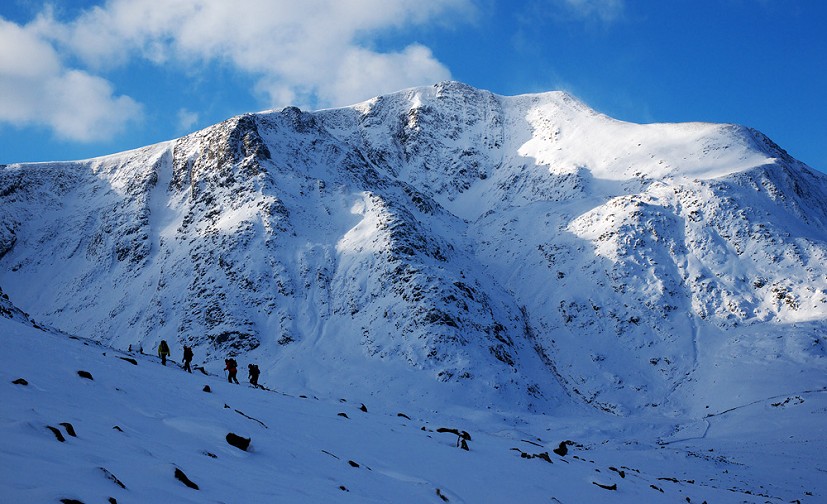
Y Garn is a mountain so seemingly gentle in nature when viewed from Nant Peris, that it's easy to be lured instead by the impressive awe of Elidir Fawr or Glyder Fawr. Don't be lulled into a false sense of security. This 3000-footer's personality changes when viewed from the Ogwen Valley: a rugged, impressive, looming mountain, and one that has claimed lives over the years.
For me it has always taken centre stage. From Ogwen the steep-sided cwm nestling Llyn Clyd constantly draws my eye and reminds me of a cheeky winter wild swim, while the attractive NE ridge offers the perfect uphill running session. In contrast, the gentle grassy SW slopes extending down to Nant Peris provide some of the best 'disengage the brain' downhill running in Snowdonia. From its rocky summit sweeping views across Snowdonia can be enjoyed ...so much so that it lured me up there the evening I wrote this. It was splendid as usual!
Sarah Ridgway is a Welsh international runner specialising in mountainous terrain, and women's record holder for the fastest Snowdon Horseshoe (1hr 43min - yes you read that right). Sarah's guiding business Run Snowdonia is one of the premier guided running services in the UK, and does anything from taking people for scenic guided runs, or a hard training session, to instructing on how to run safely in the mountains.
Sarah is supported by Rab.
For more see the Run Snowdonia website or check out Sarah's blog.
...And I'll take An Teallach
It's hard to pick a single favourite from among our many stunning 3000-footers, but since I've asked our contributors to play the game then it's only fair I join in. And because, inexplicably, none of them went for An Teallach then luckily it's all mine. If you like your skylines serrated and spiky, your corries cavernous and your crags monumental then there's no more spectacular mountain in the British Isles. When cloud boils in its hollows or sun casts a warm glow on the sandstone spires its Gaelic name, The Forge, really hammers the nail on the head. An Teallach is a complex massif rather than a single peak, and though there are two separate Munro summits they're better regarded not in isolation but as part of a larger round, the uber-classic Toll an Lochain horseshoe. This mega mountain day really does have it all: a bit of a walk-in to get the juices flowing; some of the most outrageously exposed scrambling on the Mainland; and an outlook spanning the sea and the remote interior of Fisherfield, the very essence of Scotland's wild northwest. If I ever tired of An Teallach then it'd be time to quit hillwalking and take up golf.
- INTERVIEW: Exmoor Coast Traverse - England's Best Kept Mountaineering Secret 10 Apr
- REVIEW: Rab Muon 50L Pack 9 Apr
- REVIEW: Boreal Saurus 2.0 22 Mar
- REVIEW: The Cairngorms & North-East Scotland 1 Mar
- REVIEW: Mountain Equipment Switch Pro Hooded Jacket and Switch Trousers 19 Feb
- Classic Winter - East Ridge of Beinn a' Chaorainn 12 Feb
- REVIEW: Salewa Ortles Ascent Mid GTX Boots 18 Jan
- REVIEW: Patagonia Super Free Alpine Jacket 7 Jan
- REVIEW: Deuter Fox - A Proper Trekking Pack For Kids 27 Dec, 2023
- My Favourite Map: Lochs, Rocks, and a Bad Bog 27 Nov, 2023



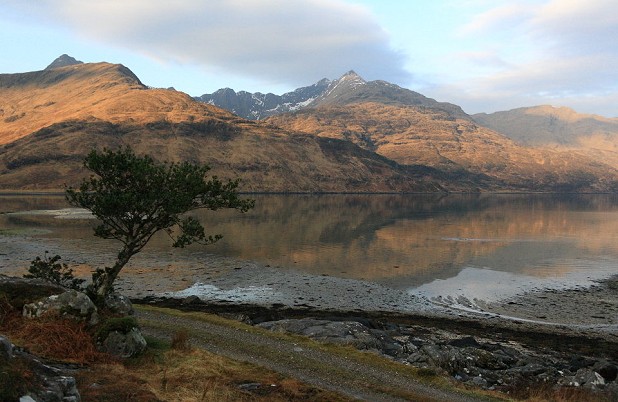
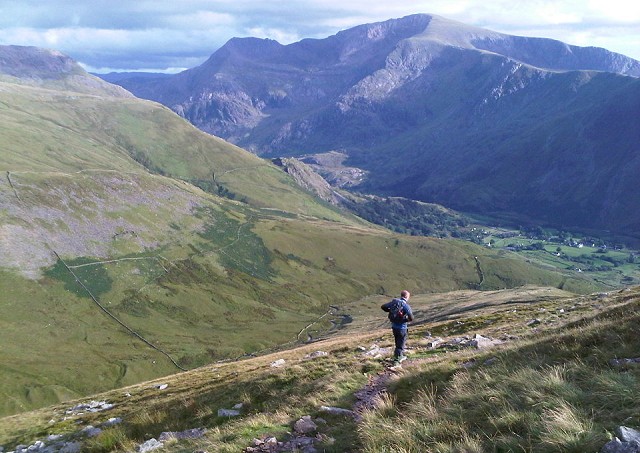
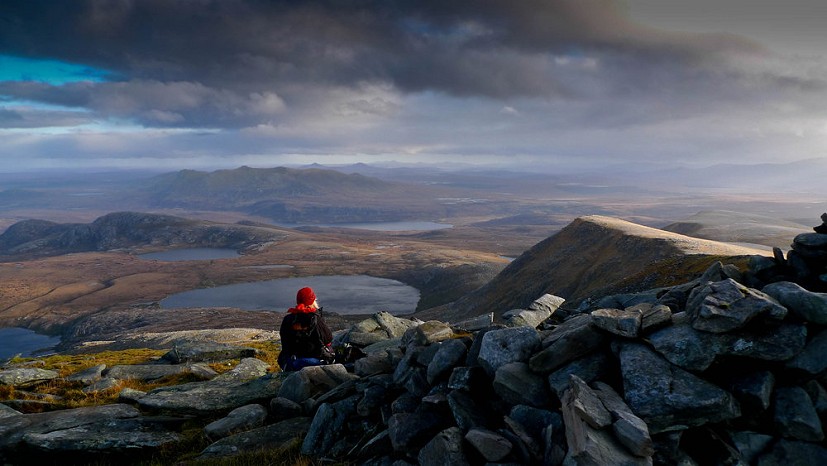
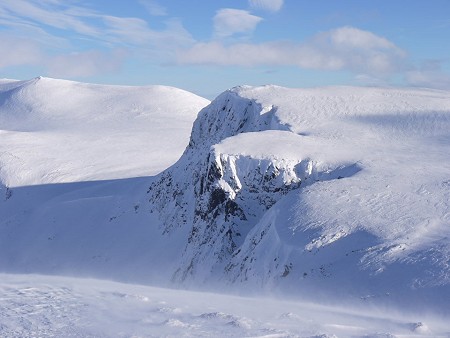
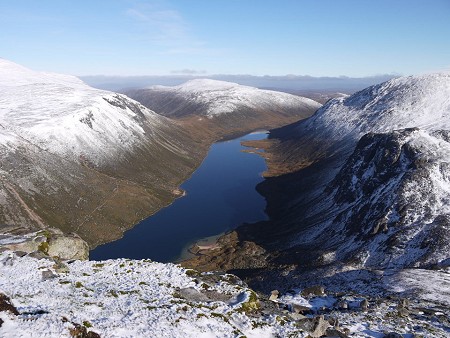
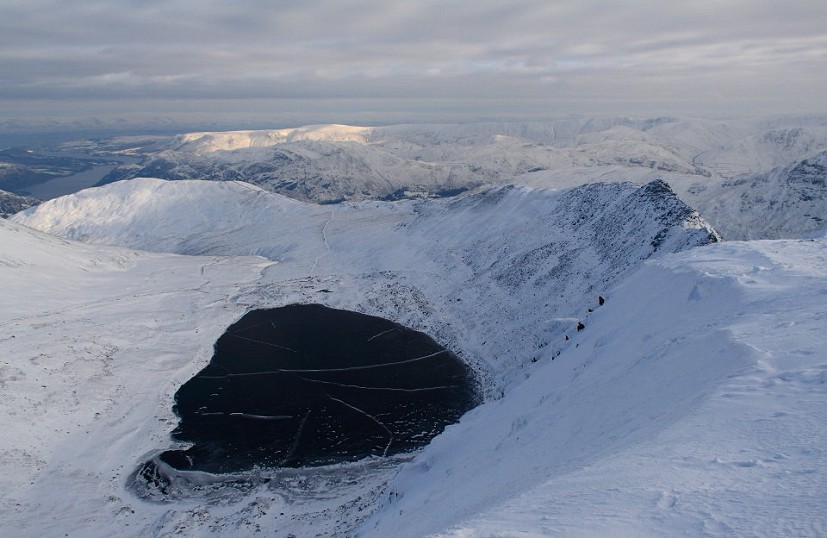
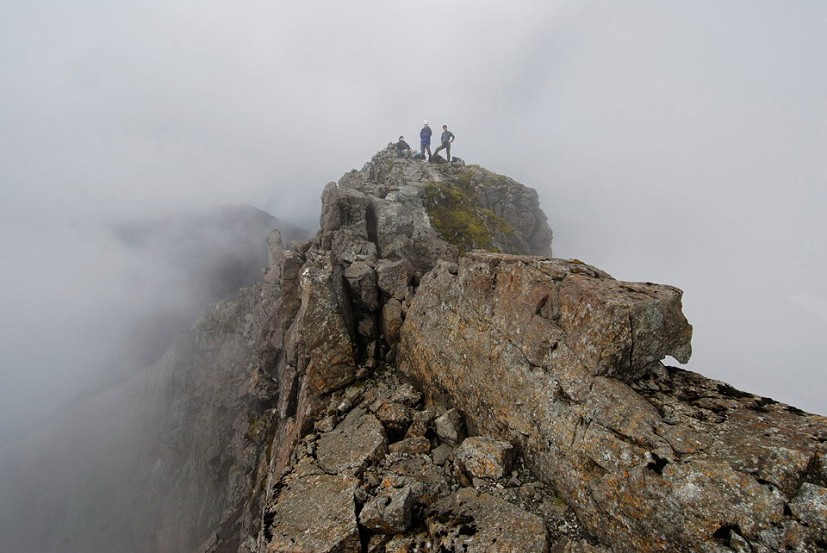
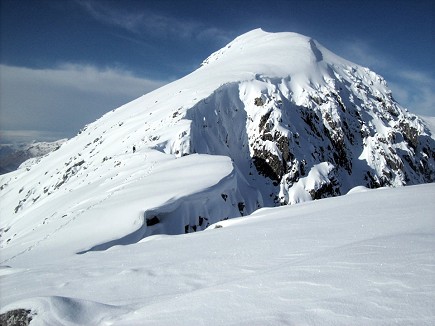

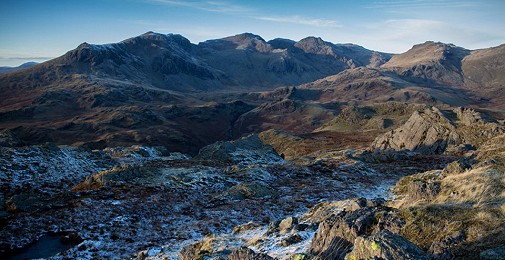


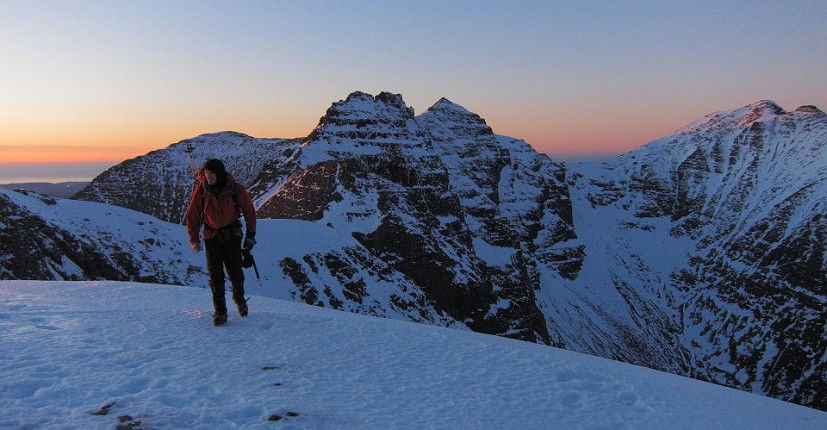

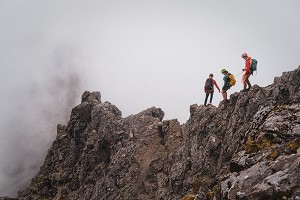
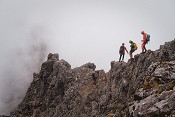





Comments